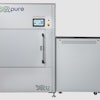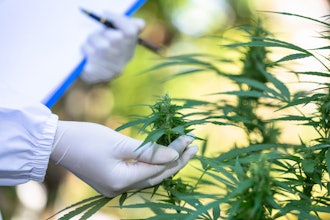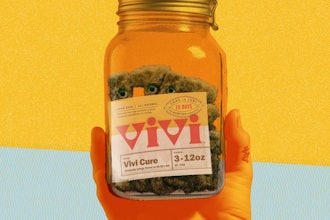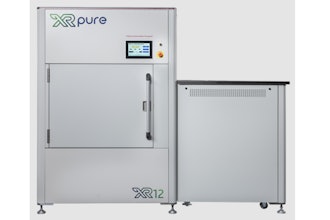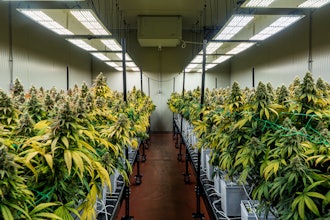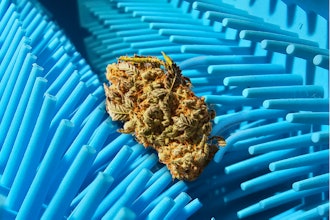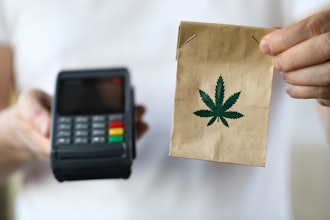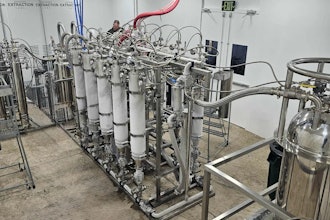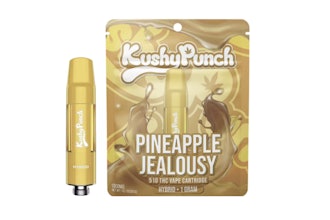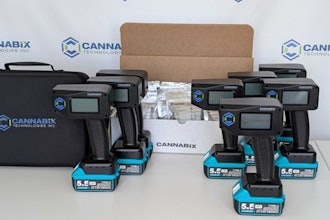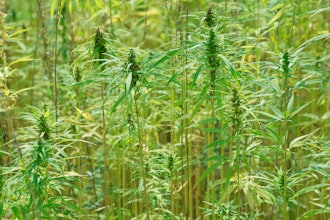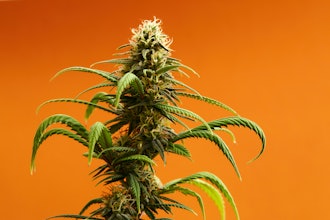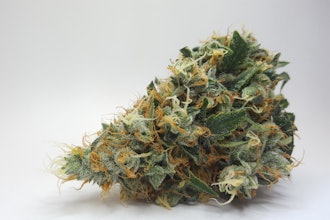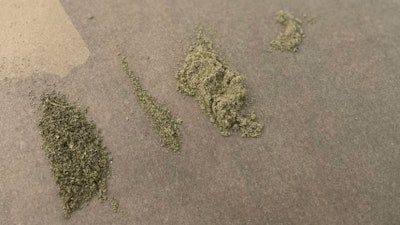
Solventless cannabis processing is the cream of the crop when it comes to extraction. The production of hash dates back centuries and, like many other things in life, processing has come full circle. Hash is where it all started, but we moved into other butane-based extraction processes for years until the recent revival of solventless hash products.
Unlike the methods used to produce concentrates like shatter and live resin (known as BHO, butane hash oil), solventless processing does not use any solvents like butane. The distinct difference results in a more pure and cleaner product. There are a few ways to produce hash and in this article we will discuss the similarities and differences of two popular methods: dry sift and washing bubble hash. We will also provide a step-by-step guide to each method.
What is Dry Sift
Dry sifting is a method of removing trichome heads from the stalks by rubbing the cannabis plant against fine mesh screens. The physical agitation process is sometimes referred to as "sieving." It is comparable to the collection of kief in the bottom compartment of your grinder (although it is a bit more involved than just grinding up buds).
Dry sift can result in a wide range of hash quality going from the best (six-star full melt) to the lowest quality (kief). The end product will depend on your input material and how much time and energy you put into the dry sifting process. For example, just a few passes through the mesh screen over a half hour will probably get you two-to-four-star hash. If you dedicate hours to the process to really clean your hash, you can achieve six-star full melt—top-tier hash that melts evenly with little to no effort.
What is Bubble Hash
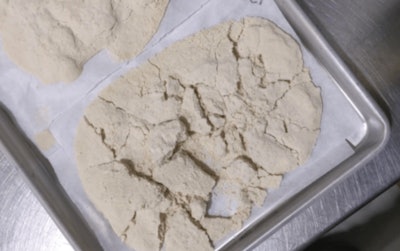 Holi Extracts
Holi Extracts
Bubble hash, sometimes referred to as water hash or ice water hash, is another popular solventless processing method. Like dry sifting, the goal is to remove the trichome heads from the stalks. To accomplish this, ice and water are mixed in a bucket with the cannabis flower to freeze then break the trichome heads away from the plant.
Fine mesh filter bags (known as bubble bags or wash bags) then collect different qualities of hash in a process known as washing hash. The result is a resinous hash material that can range in quality from full melt to food grade hash that is best used in edibles. There are a few things you can do before and during the process to increase your chances of great quality and high yields.
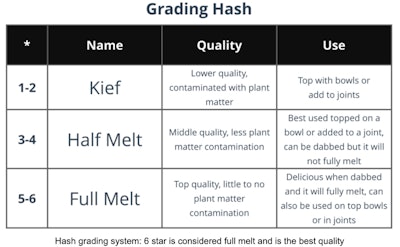 Gutenberg's Dank Pressing Co.
Gutenberg's Dank Pressing Co.
Similarities & Differences
Both dry sift and the bubble hash processes are solventless extractions, neither uses butane or other solvents to extract the cannabinoids and terpenes. This differs from other popular cannabis concentrates that fall under the category of BHO (butane hash oil) like shatter and live resin. The aim of both methods is to remove trichome heads from their stalks. These processes also both use fine mesh screens to filter out unwanted plant material. Both dry sift and bubble hash can result in the highest quality of hash. On the other side of the coin, they both can also result in lower quality hash that is best used for edibles.
While dry sift and bubble hash are similar in many ways, there are also some key differences to be aware of. The main difference is the technique used to separate the trichome heads. Dry sifting involves physically rubbing cannabis flower through mesh screens over and over again. Washing bubble hash utilizes ice and water to freeze then break the trichome heads away from the plant.
As we discussed, both methods use fine mesh screens to filter out unwanted plant material, but the type of screen they use are different. Dry sift screens are flat surfaces stretched over a wood or metal frame. The cannabis is rubbed on the screens and the hash falls through. Bubble hash filters are known as bubble bags or wash bags. They are quite literally bags that are placed inside a bucket. The water solution that contains your cannabis is poured and filtered through these increasingly fine mesh bags to collect hash and remove unwanted plant material.
Both dry sift and washing bubble hash produce hash, but the end product can differ in texture. Dry sift usually results in a more powdery product and bubble hash has more variety in textures and consistencies. Bubble hash is usually a more resinous product that becomes quite sticky. The quality of the hash can also differ. Generally, bubble hash is considered higher quality. With that being said, it is possible to achieve the highest quality with dry sifting, but it is less likely.
Bubble Hash How-To Guide
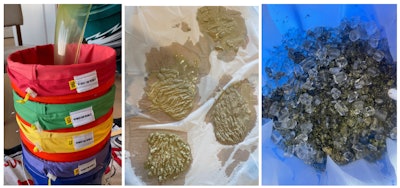 Gutenberg's Dank Pressing Co.
Gutenberg's Dank Pressing Co.
To wash bubble hash, you are going to need two buckets to match your bubble bag size (popular sizes are five gallon, 20 gallon and 32 gallon), bubble bags, ice, water, a stirring utensil, a drying sheet, a cold spoon, and cannabis flower. The flower should not be ground up but rather kept whole. You may also consider using whole plant fresh frozen (WPFF) material.
WPFF is when you freeze the whole plant right after cropping it. No trimming necessary. This can help give you a leg up when it comes to yield and end quality. If you are not using WPFF, it is important to use properly hydrated flower, around 62% relative humidity. Flower that is too dry can contaminate your hash with unwanted plant material that slips through the mesh bags.
To begin, line your first bucket with the highest micron bubble bag — your 220u bag. Place the ice and cannabis inside the bag in layers then fill it with your water. Here it is important to note that temperature control is essential. The colder the better. You might even consider working in a cold room. Now, let the flower soak for about 5 minutes before you begin mixing. After the soak, take your mixing utensil and begin to agitate the mixture. This initial wash can take you about 30 minutes. You may notice the color of the water begin to change and the water may begin to froth as you mix it.
Once the initial wash is complete, you can remove the 220u bag and let it drain into the bucket. The contents of that bag can be discarded. Now, line your 2nd bucket with the remaining bags, starting with the lowest micron on the bottom and working up. Which microns you choose to use is entirely up to you. Generally, the best hash is between the 73u and the 120u bag. One popular lineup includes the 45u bag to start followed by the 73u, 120u, then 160u bag on top. Pour the hash water from the first bucket through the wash bags into the second bucket.
Now it is time to collect your hash. Start by removing the first bubble bag and letting it drain back into the bucket. Once fully drained, use a cold spoon to collect the hash from the bag. It can be helpful to stretch the bag out. If you are air drying the hash, place the collected hash onto your 25u drying screen and on top of a piece of cardboard. If freeze drying, place the hash onto your freeze dryer sheets. Continue this process with the remaining bubble bags. Once complete, all you have to do is allow your hash to dry out. The water can be reused in your garden if you so chose.
Dry Sift How-To Guide
 Washed Up Jellyfish
Washed Up Jellyfish
Now we will discuss how to make dry sift hash. You are going to need: dried cannabis flower, non-stick gloves, two rigid cards like IDs or bank cards, and three or four dry sift screens. Begin by making sure your cannabis flower is dry and crunchy. Wet flower will not break up as well and your yields will be low. Next, place your rigid cards into the refrigerator to cool them down. Heat is the enemy. Now, stack your dry sift screen over top of a flat and smooth surface from which you will collect the dry sift at the end. Start with the lowest micron on the bottom and work your way up.
Now you are ready to sift. Start to hand break up your buds and gently rub them into the screen. Do not overdo this and pulverize your buds. This process should take about 10 or more minutes depending on how much material you are working with. Now move onto the next screen. Take your cooled down rigid card and begin to sift the hash on the second screen. Steady even pressure is key for this step. Repeat the sifting process for the remaining screens. It is best practice to alternate the card you use so that it is always cool.
Once complete, you can further clean your hash with a piece of parchment paper. This is known as static tech and it uses static electricity to remove any leftover plant material from your hash.
As a small batch solventless supplies brand in Philadelphia, Gutenberg's Dank Pressing Co. have a passion for the science of making solventless cannabis products and strive to educate the community of its benefits. They make everything from rosin press bags, bubble bags, rosin filter tubes, and stainless steel micron screens that are needed for any solventless operation.




